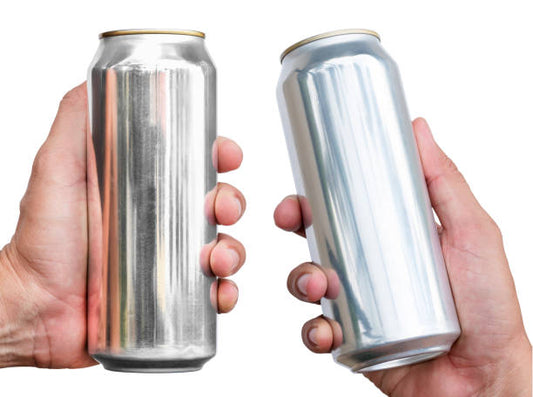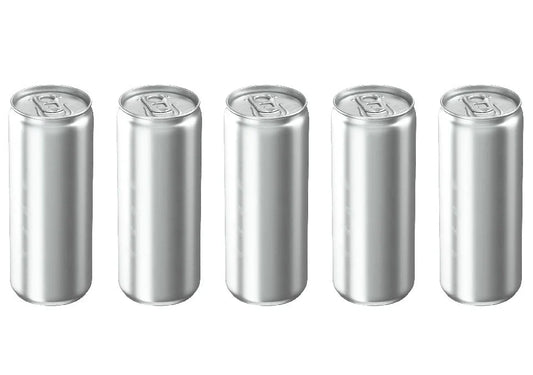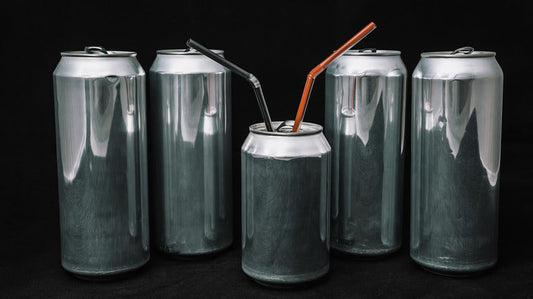We are all aware that plastic packaging is a cause of numerous environmental and health risks. However, because this sort of material is widely utilized in many industries, including food packing, it is difficult to reduce its use. So, how can we lessen our reliance on plastic packaging? What can food businesses and consumers do to help? Check it out in the article below.
Understanding the Plastic Problem in Food Purchases
In food packaging sector, plastic play an important role. In fact, in food packaging, plastic can be used for primary packaging or seconday or tertiary packaging. It can be a bag, a food container, straws, … or anything. Here are some numbers illustrating the plastic problem globally and in Canada:
Globally:
- Since the 1950s, more than 8.3 billion tons of plastic have been produced globally.
- The global food packaging industry produces an estimated 170 million tons of plastic packaging annually.
- Around 6.3 billion tons of plastic waste has been generated, of which only 9% has been recycled, 12% incinerated, and 79% landfilled or leaked into the environment.
- Each year, an estimated 8 million tons of plastic enter the oceans, harming marine life and contaminating the food chain.
In Canada:
- Canadians are among the highest per-capita plastic consumers in the world, using an average of 346 kg per person per year.
- Food packaging accounts for approximately 38% of Canada's plastic waste
- Canada generates around 3.3 million tons of plastic waste annually, of which only 11% is recycled and 89% is landfilled or incinerated.
- Canadians use an estimated 15 billion plastic bags each year, with only about 10% recycled.
Due to the convenience and inexpensive cost, plastic becomes the most commonly used for packaging. However, this leads to numerous issues relating to environment and human health. Learn more about Impact of Plastic Food Packaging to Environment
What Does Reducing Food Plastic Packaging Help?
Because of the consequences of food plastic packaging, reducing plastic in the food and beverage become more and more popular. This action offers different benefits to environment, human health and also economy.
Enviromental benefits
- Reduced waste: Less plastic packaging means less waste in landfills and oceans, protecting wildlife and ecosystems.
- Lower carbon footprint: Plastic production and disposal are energy-intensive, contributing to climate change. Reducing plastic use lowers our carbon footprint.
- Microplastic reduction: Plastic breaks down into microplastics that contaminate our environment and food chain. Less plastic reduces microplastic pollution.
- Resource conservation: Plastic relies on finite fossil fuels. Using less helps conserve resources for future generations.
Human Health
- Decreased Chemical Exposure: Some plastic packaging contains harmful chemicals like BPA and phthalates that can leach into food. Using less plastic reduces exposure risk.
- Improved Food Safety: Alternative packaging materials like glass and metal may offer better protection from contamination and spoilage, leading to safer food.
Economy
- Cost Savings: Reducing reliance on plastic packaging can lead to cost savings for businesses and consumers, as alternative materials may be cheaper and require less energy to produce.
- New Technology Advancement: The demand for sustainable alternatives encourages innovation and the development of new technologies for environmentally friendly packaging.
- Job Creation: The transition to sustainable packaging can create new jobs in manufacturing and recycling industries.
Not only responsibility of government, reducing plastic food packaging need each of us to take action. There are various ways to reduce plastic food packaging as business and customers.

Things that business can do to reduce food plastic packaging
Here are 10 things that you can practice to reduce food plastic packaging at your own restaurants, coffee shop or catering company:
- Minimize plastic packaging by analyzing existing packaging and eliminate unnecessary elements like excessive wrapping, trays, or inner pouches.
- Replace plastic packaging with eco-packaging that is made from sustainable material like paper, cardboard, bamboo, or bioplastic.
- Explore Reusable Options: Implement reusable containers for specific products or consider refill programs for liquid or dry goods.
- Partner with Sustainable Suppliers: Collaborate with suppliers to explore sustainable packaging options for both incoming and outgoing materials.
- Increase Transparency: Track and monitor plastic usage throughout the supply chain, identifying areas for improvement.
- Incentivize Sustainable Practices: Offer rewards or discounts to suppliers who adopt sustainable packaging solutions.
- Educate Consumers: Inform customers about the environmental impact of plastic and highlight your efforts to reduce it.
- Offer Sustainable Choices: Provide customers with readily available options for products with minimal or sustainable packaging.
- Implement In-Store Recycling Programs: Make it easy for customers to recycle plastic packaging by providing designated bins and clear instructions.
- Reward Sustainable Behavior: Offer incentives, like points or discounts, to customers who choose reusable packaging or participate in recycling programs.
At Kimecopak, we provide wholesale eco-packaging products that is made from sustainable materials for North American market, including:
Our food packaging items have high-quality, compliance with regulations, and can be used for different food business whether you are a small restaurant in town or a food chain. In addition, we support business to adapt sustainability by the exclusive offers for which includes fixed price in 6 months, free storage, scheduled shipping and discount 5-7% for long-term partner.
10 Things that Customers Can Do to Cut Down Food Plastic Packaging
With customers, your can practice to reduce plastic food packaging by your own in various ways. Here are 10 suggestions from Kimecopak:
- Choosing Eco-friendly Stores for shopping: At Eco-friendly stores, you can assure the sustainable resource of products, find the environmentally friendly items like cosmetics, personal items, or family tools, …
- Support companies with sustainable packaging: Choose brands committed to reducing their environmental footprint and using sustainable packaging solutions. Look for brands that use recycled materials, compostable packaging, or minimal packaging.
- Shop at farmers markets: Farmers markets often offer locally grown produce with minimal packaging, allowing you to buy directly from the source and reduce your reliance on packaged supermarket options.
- Buy in bulk: Purchase larger quantities of food items to reduce packaging per unit. This is especially effective for dry goods like grains, nuts, and pasta.
- Choose unpackaged or minimally packaged products: Look for items sold without plastic packaging or with minimal wrapping, such as loose fruits and vegetables.
- Refill and reuse: Look for opportunities to refill and reuse containers, such as refillable water bottles, glass jars, and reusable shopping bags.
- Compost food scraps:Composting food waste reduces the need for virgin materials in plastic production and creates nutrient-rich compost for your garden
- Recycle in right ways: recycling in right ways is a great way to reduce plastic. See more ways to recycling paper cups.
- Plan your meals and grocery shopping: This helps you avoid impulse purchases and unnecessary packaging.
- Be creative and resourceful: Explore alternative solutions for food storage and transportation, such as using cloth bags, reusable containers, and insulated lunch bags.









